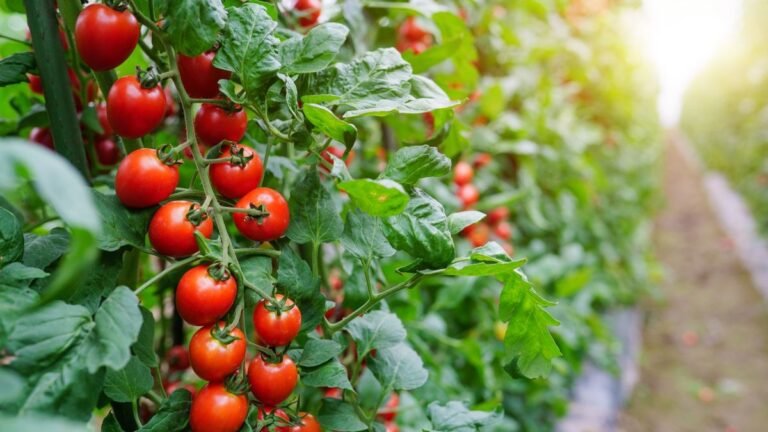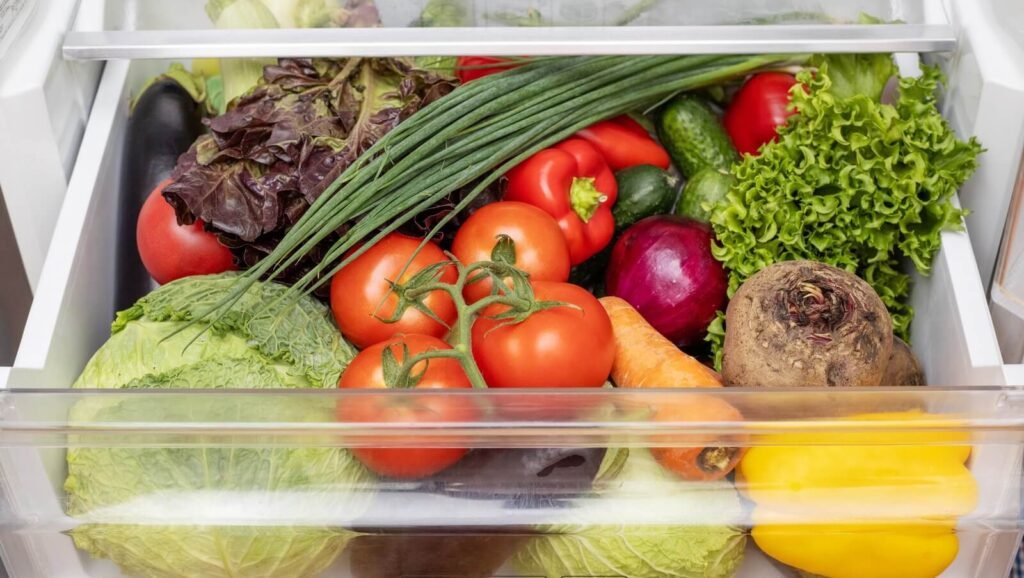Have you ever found yourself with a surplus of ripe, juicy tomatoes and no idea what to do with them? Worry not, preserving tomatoes is simpler than you might think and can ensure you have a delicious supply all year round. Whether you’re stacking up for winter or simply want to reduce waste and maximise your recent harvest, find out how to preserve tomatoes. From canning and freezing to making rich tomato paste, the solutions are varied and easy.
Tomatoes are incredibly versatile and packed with essential nutrients, making them a key ingredient for preppers focused on maintaining a stable, healthy food supply. In this post, I’ll share several tried-and-true methods to preserve your tomatoes, so you’re always prepared for whatever comes next. Let’s dive in and explore how you can keep your tomatoes fresh and full of flavour even as the seasons change.
Post Contents
ToggleUnderstanding Different Preservation Methods
When it comes to preserving tomatoes, there are several methods that you can choose from, each with its own benefits. Whether you want to enjoy tomatoes straight from the jar, add them to your favourite recipes, or store them for later use, understanding different preservation methods will help you make the most of your tomato harvest.
Canning Tomatoes
Canning tomatoes is a traditional method that allows for long-term storage. The process begins with sterilizing jars, which is crucial to prevent harmful bacteria. I usually start by washing the jars and then placing them in an oven at 225°F for at least 10 minutes or following the water bath method.
Next, you’ll need to prepare the tomatoes by peeling and crushing them. Some people like to add a bit of lemon juice or citric acid to ensure safe acidity, which is essential for preventing spoilage. This method keeps your tomatoes safe for up to a year.
Key steps include:
- Sterilize jars: Clean thoroughly and heat to kill bacteria.
- Prepare tomatoes: Peel, crush, and ensure acidity.
- Can the tomatoes: Seal the jars and process in a boiling water bath.
Canning is a bit laborious but quite rewarding in the colder months when a jar of home-canned tomatoes can bring summer’s warmth to your table. For more information, check out this comprehensive guide on canning tomatoes.
Freezing Tomatoes
Freezing tomatoes is less time-consuming and maintains the tomatoes’ natural flavour and texture. Begin by washing and drying your tomatoes thoroughly. You can also core them if you prefer.
Freezing tomatoes doesn’t require peeling, but blanching them first can make peeling easier later. Place whole or chopped tomatoes on a baking sheet and freeze until solid. Then, transfer them to freezer bags.
To use frozen tomatoes, simply defrost them and add to your cooking. They’re perfect for soups, stews, and sauces. This method keeps the tomatoes delicious and stops them from becoming watery when thawed.
Steps to freeze:
- Wash and dry: Ensure tomatoes are clean and dry.
- Blanch if desired: Makes peeling easy.
- Freeze individually: Lay them out on a baking sheet before bagging.
Need a step-by-step guide? This guide on freezing tomatoes is my go-to resource.
Dehydrating Tomatoes
Dehydrating tomatoes is an excellent way to save space while enhancing their flavour. You can use an oven or a dehydrator. Slice the tomatoes evenly and spread them on a baking sheet or dehydrator tray.
The process takes time— anywhere from 6 to 12 hours. The tomatoes should be dry and hard, not bendable. Dried tomatoes keep well in airtight containers and are perfect for adding to salads, pastas, and stews. You can even rehydrate them by soaking in water or broth before use.
The benefits of dehydrating include:
- Space-saving: Dried tomatoes occupy less space.
- Flavour burst: Concentrated taste enhances recipes.
Explore more on how to dehydrate tomatoes effectively using this detailed guide.
By mastering these preservation methods, you’re ensuring that you can enjoy your tomato bounty all year round. Each method offers its own unique advantages, making it fun and rewarding to try them all!
How To Store Tomatoes
Tomatoes are a wonderful vegetable that add flavour and nutrition to many dishes. However, knowing how to correctly store them is essential to make them last longer. Here are the best ways to ensure your tomatoes stay fresh and delicious.
Room Temperature Storage
One of the most common mistakes people make is putting tomatoes in the fridge too soon. Plain and simple, tomatoes are best kept at room temperature.
- Unripe Tomatoes: If your tomatoes are unripe, leave them out of the fridge. Let them sit on the countertop or in a paper bag until they turn red and soft.
- Ripeness Indicators: Keep an eye on their colour and texture. Once they are ripe and juicy, it’s time to think about short-term storage.
Here’s more on the best practices for storing tomatoes.
Refrigeration
The age-old debate of whether to refrigerate tomatoes has a simple answer: only do it when they’re fully ripe and you won’t eat them soon. Here’s how:
- Ripe Tomatoes: Once your tomatoes reach peak ripeness, place them in the refrigerator to prevent them from going bad. The cold air slows down their ripening process.
- Extended Freshness: For the best result, store tomatoes stem-side down in plastic containers or wrap each tomato in a paper towel. This preserves their moisture and texture.
Learn more on why refrigerating tomatoes can be beneficial here.
Slow Cooked Tomato Sauce Storage
If you have an abundance of ripe tomatoes, consider making a simple tomato sauce. This method is an excellent way to preserve their flavour and it’s incredibly versatile.
- Cooking Down: Cook your tomatoes down into a sauce, add a bit of salt, and either refrigerate it for up to a week or freeze it in airtight containers.
- Freezing: Freezing is a game-changer as it helps you avoid waste while maintaining a high-quality product ready to be transformed into multiple meals.
This tomato sauce recipe serves as a great base for many dishes.
Freezing Tomatoes
Freezing tomatoes is a straightforward and effective method to preserve them. You don’t have to peel them first, which saves a ton of time.
- Preparing: Simply wash the tomatoes, dry them, and place them on a baking sheet. Let them freeze until solid, then transfer them to freezer bags.
- Advantages: When you’re ready to use, these frozen tomatoes are fantastic for sauces, soups, and stews. The freezing process makes them incredibly easy to peel once you defrost them.
For additional tips, here’s how to freeze tomatoes the right way.
Storing tomatoes may seem tricky, but with these methods, you’ll keep them fresh and tasty for as long as possible. Remember, it’s all about if they’re ripe or not and how soon you’re planning to use them. Happy preserving!
Creative Ways to Use Preserved Tomatoes
When it comes to preserving an abundance of tomatoes, it’s not just about storing them for future use; it’s also about getting creative with how you incorporate these vibrant, flavour-packed gems into your daily meals. With preserved tomatoes, whether canned or frozen, there’s an exciting array of dishes you can prepare, from hearty sauces to refreshing salads.
In Sauces and Soups
One of the best ways to use preserved tomatoes is in sauces and soups. These methods take full advantage of the rich, deep flavours that preserved tomatoes offer.
- Classic Marinara Sauce: Canned or frozen tomatoes can be an excellent base for a classic marinara sauce. Simply sauté some garlic in olive oil, add your tomatoes, a pinch of sugar, and let it simmer until thick. You can use this sauce on pasta, pizzas, or even as a dipping sauce.
- Tomato Soup: There’s nothing quite like a warm bowl of tomato soup on a chilly day. Start with canned whole or chopped tomatoes, add some chicken or vegetable broth, and let the flavours meld together. A dash of cream at the end adds richness, making the soup perfectly comforting.
When you incorporate preserved tomatoes into your sauces and soups, you not only enhance the flavours but also benefit from the tomatoes’ natural thickness and sweetness.
In Salads and Salsas
Preserved tomatoes aren’t just for cooked dishes; they can also shine in fresh recipes like salads and salsas. It’s all about pairing them with the right ingredients to keep things delicious and exciting.
- Tomato Salad with Mozzarella: Think preserved tomatoes can’t work in a salad? Think again. Pair chopped canned tomatoes with fresh mozzarella, basil, and a splash of balsamic vinegar for an easy and flavourful Caprese salad twist. The preserved tomatoes add an intense depth of flavour that fresh tomatoes sometimes lack.
- Spicy Tomato Salsa: Ready to spice things up? Use canned chopped tomatoes as the base for a zesty salsa. Mix them with finely diced onions, cilantro, jalapeños, and a squeeze of lime juice for a salsa that’s perfect for tacos, chips, or as a flavour booster for grilled meats.
By exploring these creative uses, you’re not only answering the question of how to preserve tomatoes but also finding delightful ways to enjoy them year-round.
Conclusion
Preserving tomatoes is an essential skill for any prepper. By understanding how to preserve tomatoes through canning, freezing, oven-drying, or making homemade tomato paste, we ensure that we always have this versatile ingredient on hand. Canning tomatoes locks in flavour and nutrients, ready for sauces and soups. Freezing tomatoes keeps the process simple and quick, offering peeled tomatoes at the drop of a hat. Oven-drying tomatoes provides a potent taste boost for winter dishes, while homemade tomato paste adds an enriched flavour to countless meals.
These methods not only save your harvest but also make you self-sufficient. Your future self will thank you for the delicious, home-preserved tomatoes when fresh produce isn’t an option. Armenia
If you want to find out how to store and preserve Strawberries click Here
Check out our Canning and Preserving kit below























